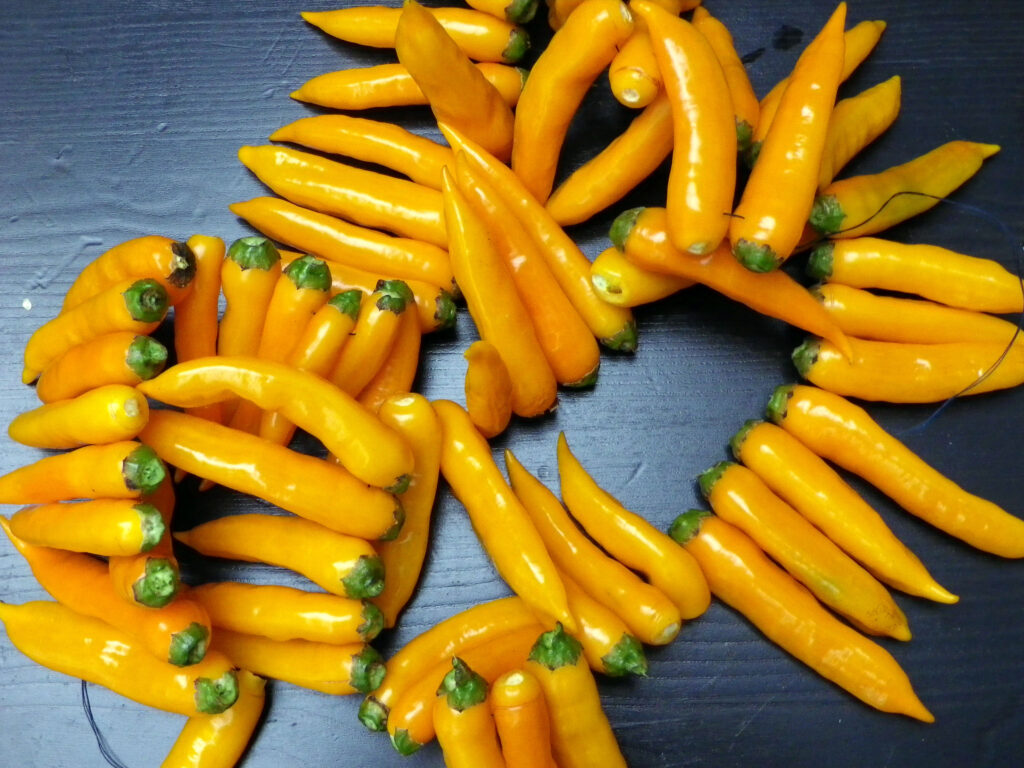
Aji Chinchi Amarillo – 59 days. (green>golden orange-yellow). Fruity, flavorful, with medium-high heat. 3″*.5″ fruit yield heavily, a key ingredien in Peruvian cuisine.
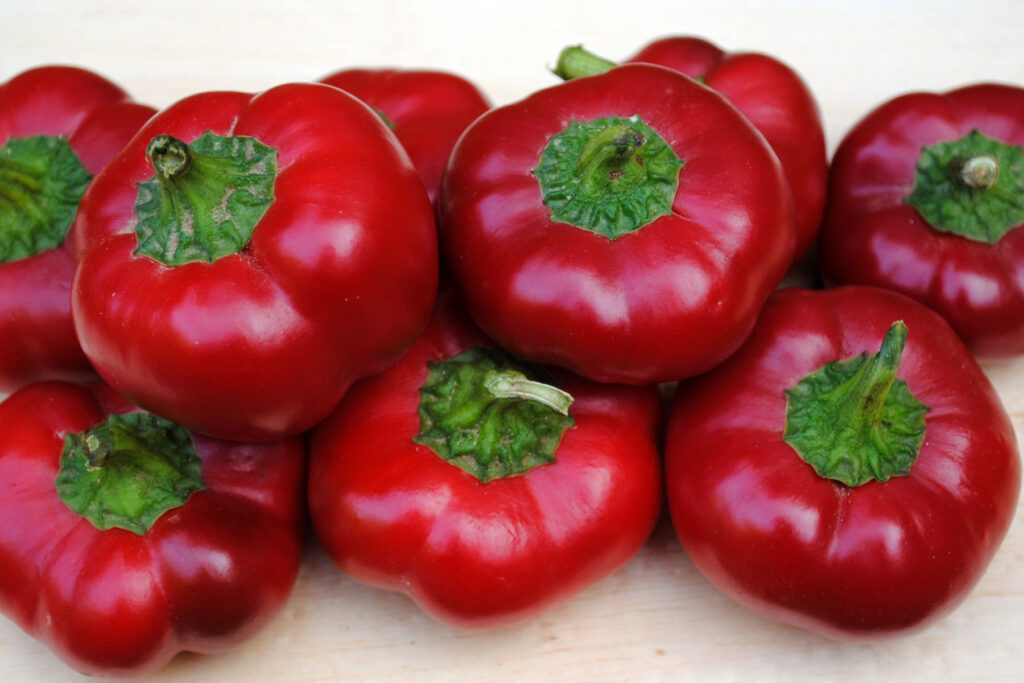
Ashe County – 52 days. (green>red) An incredibly sweet, bright red, thick-fleshed 4″*1.5″ pimento pepper. Great raw, as well as for cooking, roasting, and canning.
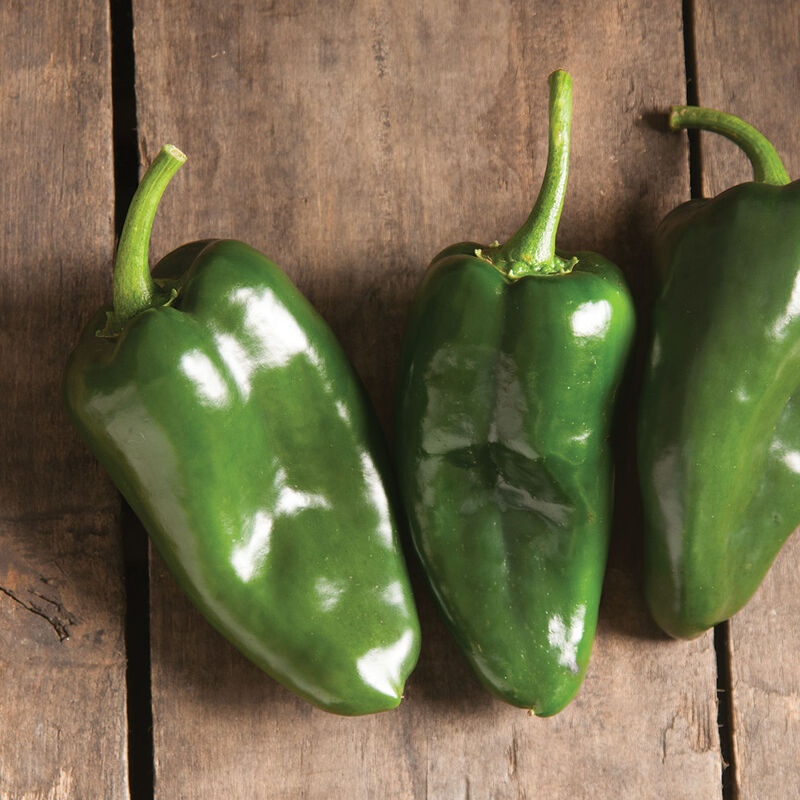
Bastan Poblano – 65 days to maturity. Early and adaptable poblano pepper. 5″ fruits for summer, early fall harvest. Bastan’s fruits are smooth, making them easy to peel for chile rellenos. Moderate pungency.
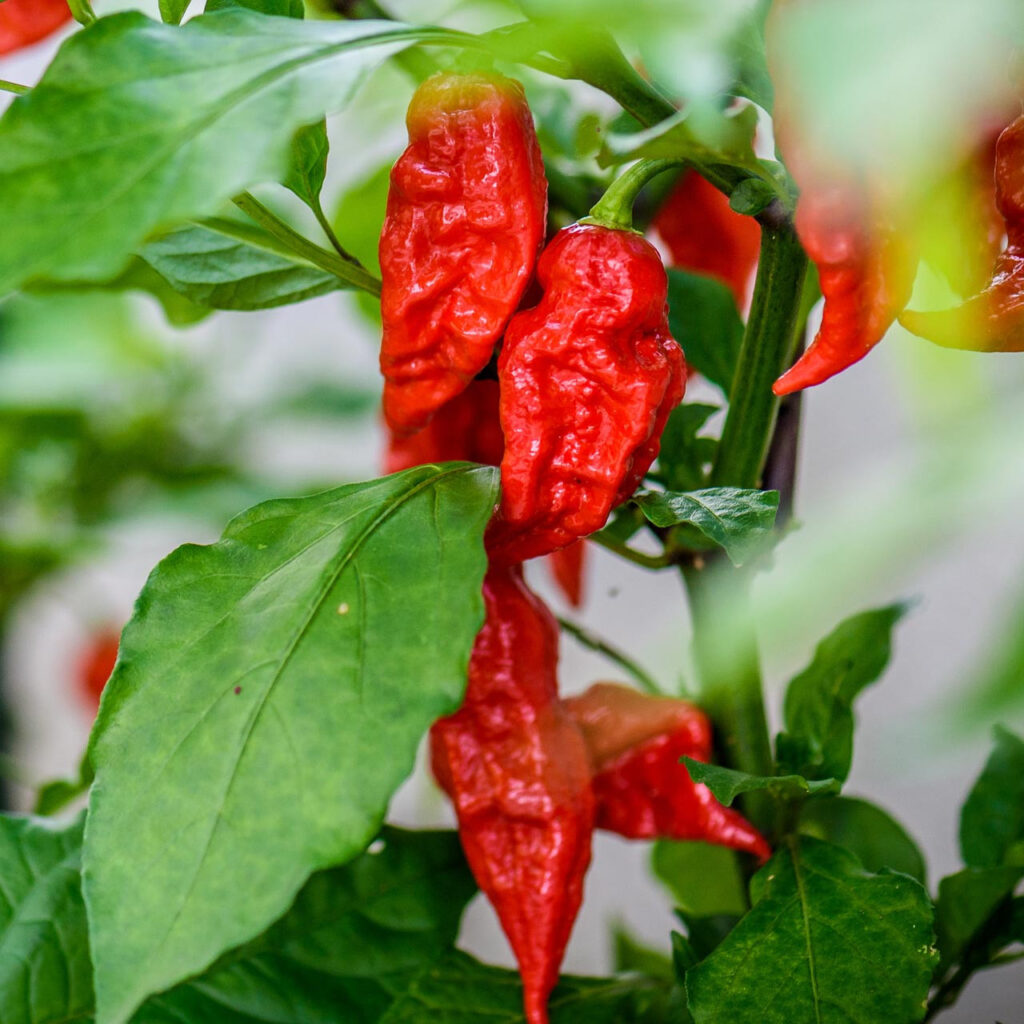
Bhut Jalokia – Until 2011 this was the hottest pepper in the world! With Scoville Units between 800.000 ~ 1.001.300 you can call this pepper nuclear. This pepper comes from north-eastern India, particularly Assam, Nagaland and Manipur. The plants can grow up to 45-120 cm. The pods are 5 to 8.5 cm in length and 2.5 to 3 cm width. The Bhut Jolokia loves heat and humidity, but with a little extra care and love it will grow well in a cooler climate. The Bhut Jolokia has a long growing season.
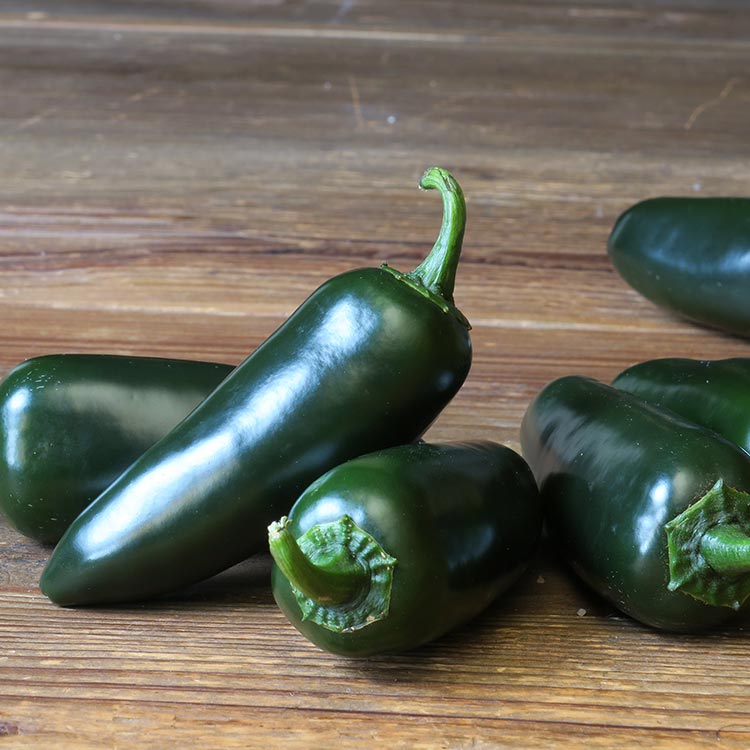
Black Magic Jalapeno – 65 days green, 85 days red. very dark green (almost black). fruit average about 3.5″ long and exhibit traditional “checking” (smallcracks in the skin ghat indicate the fruits are ready for harvest).

Candy Cane Chocolate Cherry – For gardeners, Candy Cane Chocolate Cherry Hybrid Sweet Pepper is like Christmas in July! Very ornamental plants bears lots of deliciously sweet, striped fruits! This early maturing variety produces attractive green fruits with unique white stripes that change to chocolate and cherry red as they mature. The mini bells are deliciously crisp and sweet—and can be eaten at any stage of ripeness. They’re great for snacking, raw vegetable trays or cut up in salads. Growing 18-24 in. tall, the compact plants have variegated foliage and are very ornamental, so they’re ideal for the edible landscape, tucked into a perennial bed or even grown in a container. 70-75 Days
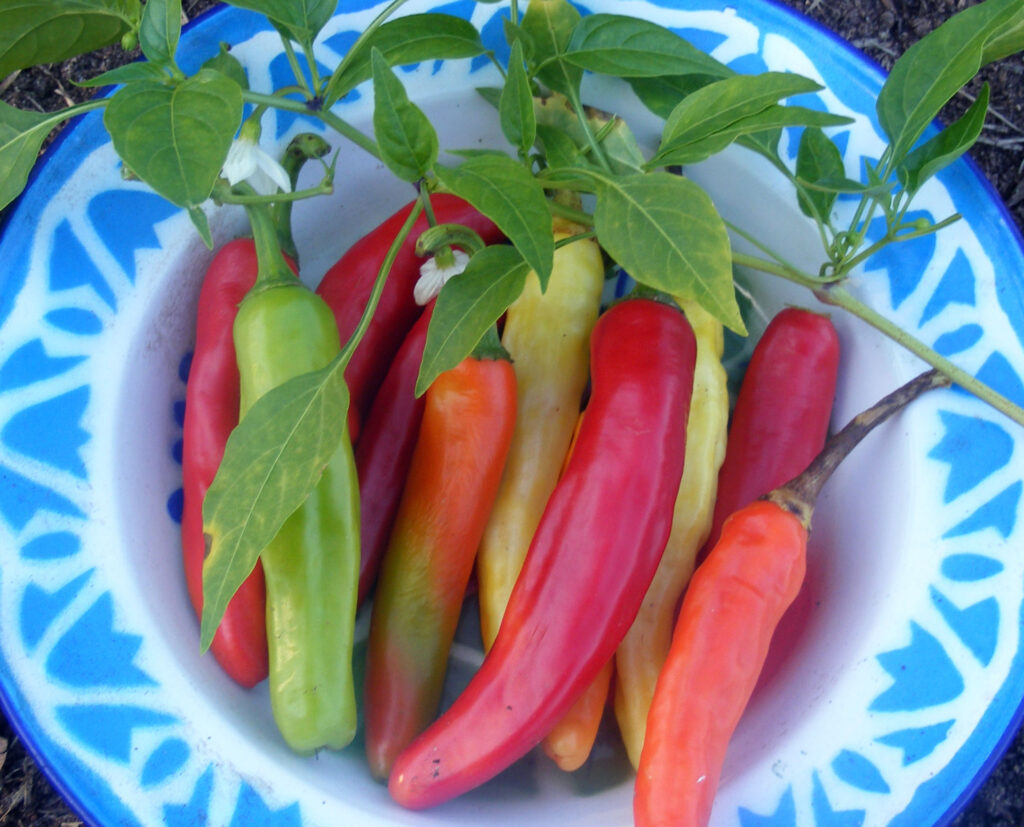
Charleston Hot – Near habanero heat! 72 days. (green>yellow.orange>red) Flavorful .5″*5″ fruits; a favorite for hot sauce in the Carolinas. Colorful fruits and the unusual yellow leaves make this an interesting ornamental.

Chinese Giant – 90 Days”A mild, midseason type perfect for home gardens. Produces uniformly large fruits that have a blocky bell shape and thick walls – ideal for stuffing. Sweet flavored and ripens to a brilliant cherry red color, each averaging 4 to 5″” across and 6″” in length.”
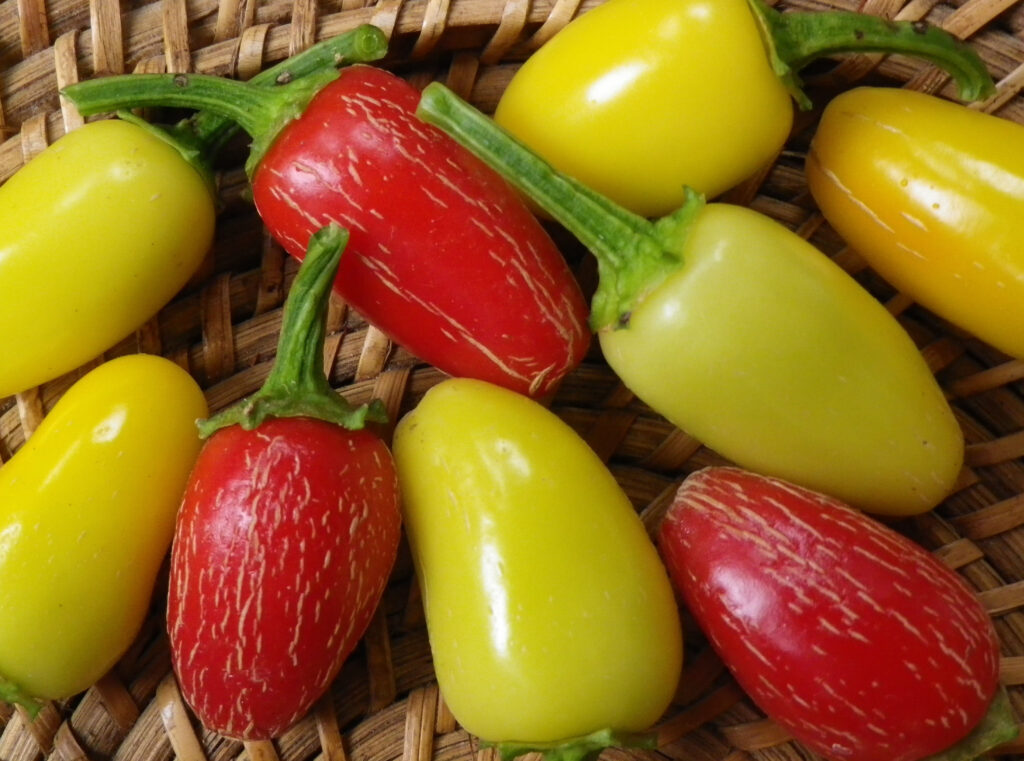
Jaloro – 65 days. (yellow>orange>red) 1.5*2″ fruit are juicy with thick walls. Good container variety.

Jedi Jalapeno – 72 green; 82 days red ripe. largest jalapeño offering, Jedi’s fruits avg. 4-4 1/2″ and are slow to check (show small cracks in skin). The large plant is of the “continuous set” type that produces over a long harvest window, especially in regions with a long growing season. Our variety with the highest potential yield. High resistance to bacterial leaf spot races 1-3.
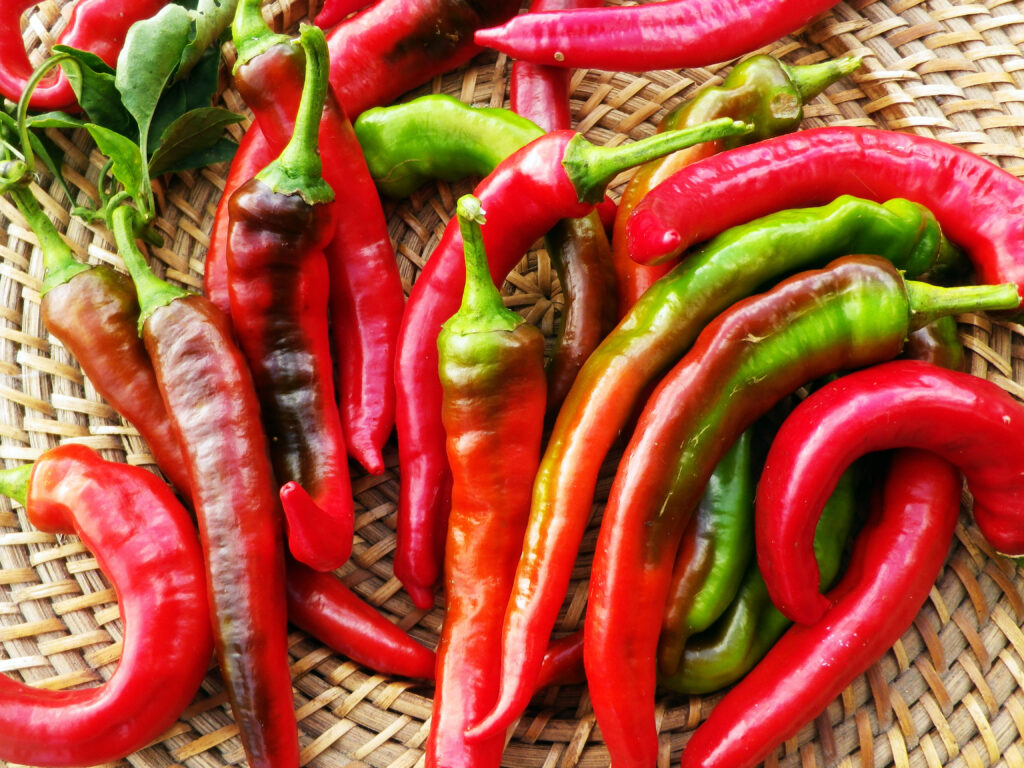
Jimmy Nardello’s – fire engine-red peppers are one of the best for frying, wih a mild, spicy flavoe. Productive plants are loaded with glossy-red 10″-long peppers. Plants may need staking.

Pasilla Bajio – 70-80 days. Named for its dark brown color and raisin-like scent when dried, the Little Raisin has productive, 3′-tall plants yielding abundant, 6″ to 12″ elongated pods that are just 1″ wide. Maturing from medium green to dark brown, they may be used when green like regular Chiles but are most often allowed to dry on the plants and used in prized Mexican mole sauces. These medium hot Chiles rank from 1,000 to 1,500 Scoville heat units.
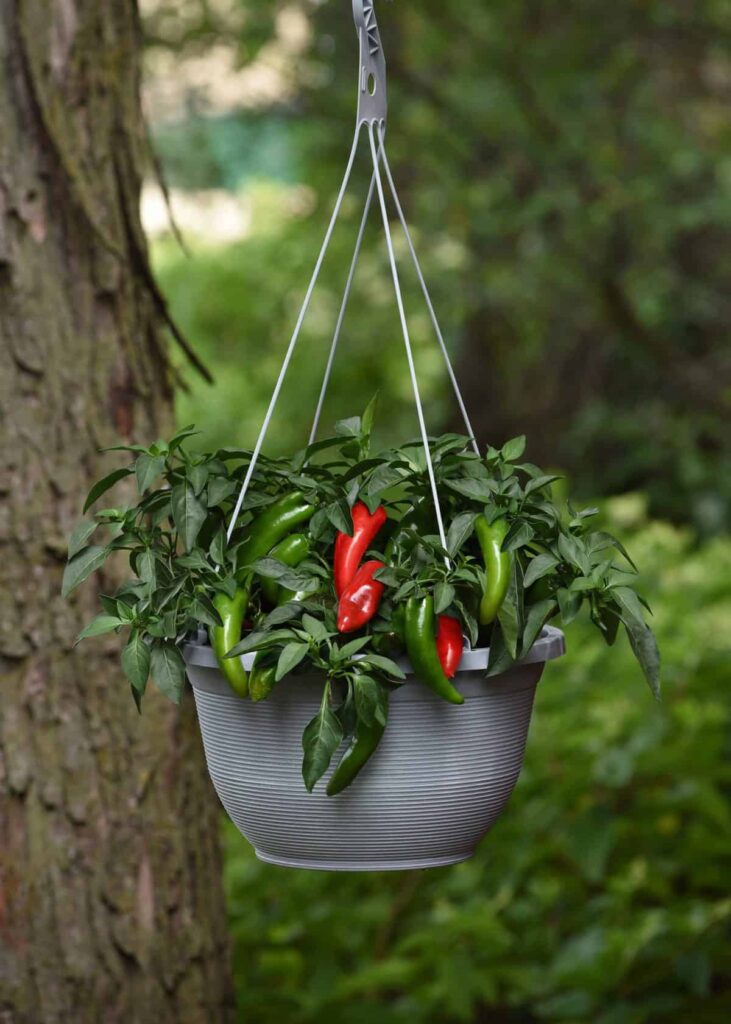
Pot-a-peno – An award winner, this early-fruiting Pot-a-Peño Pepper (jalapeño) is highly decorative. The colorful green and red peppers hang gracefully beneath an attractive canopy of dark green foliage, so Pot-a-Peño Peppers are easy to harvest. The compact, mounding habit is sized to fit in almost any small garden space or in a pot on a patio or in a hanging basket, where Pot-a-Peño Peppers will elegantly cascade over the edges. The green jalapeños are spicy but become slightly sweet and spicy as they ripen and turn red.
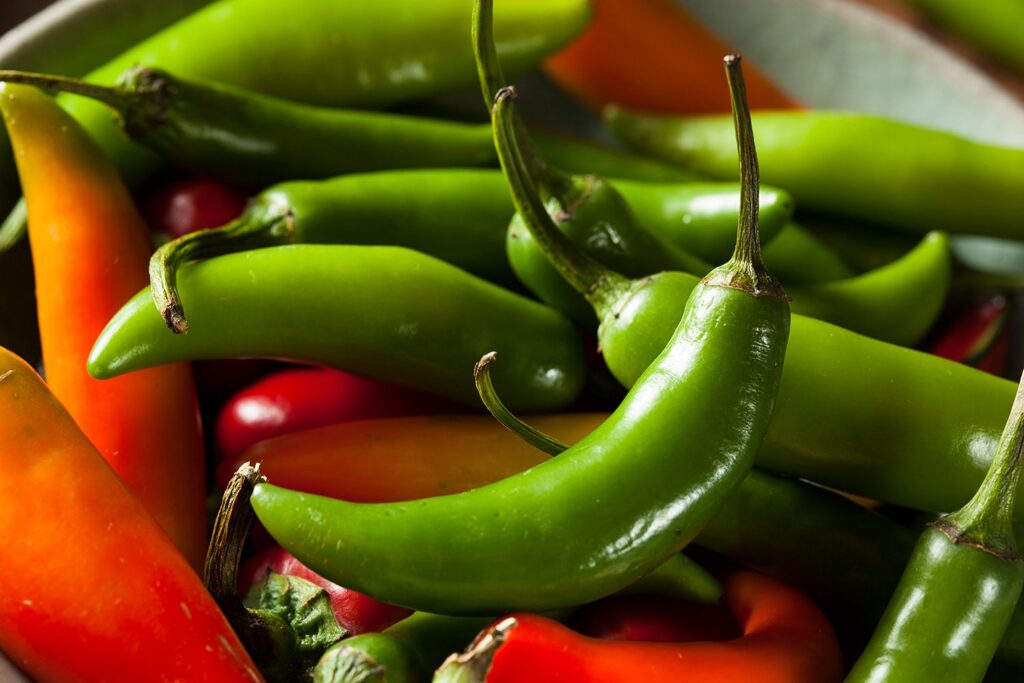
Serrano – Serrano peppers are usually between one and four inches long and half an inch wide, making it a bit smaller than a jalapeño. Serranos can be found in a variety of colors, including green, red, yellow, orange, and brown. The different colors don’t indicate different types of peppers, but rather the stage at which they were picked. For instance, green Serranos will have a milder flavor, while orange and red peppers will have a more developed, spicier flavor.

Shishito – 60 days green; 80 days for red. Grow the pepper that’s long been prized by restaurants and is a favorite among chefs. Shishito is a Japanese sweet pepper that produces handfuls of finger-long fruits. Usually used when green (though also fine to eat when red), the peppers are thin-walled, making them ideal for tempura and stir fries. On this side of the Pacific, it’s wildly popular as an appetizer—tossed with oil, then char-grilled or pan-seared to a blackened, blistered state and salted. Plants are compact and perfect for containers. Use one plant per 18-inch pot.
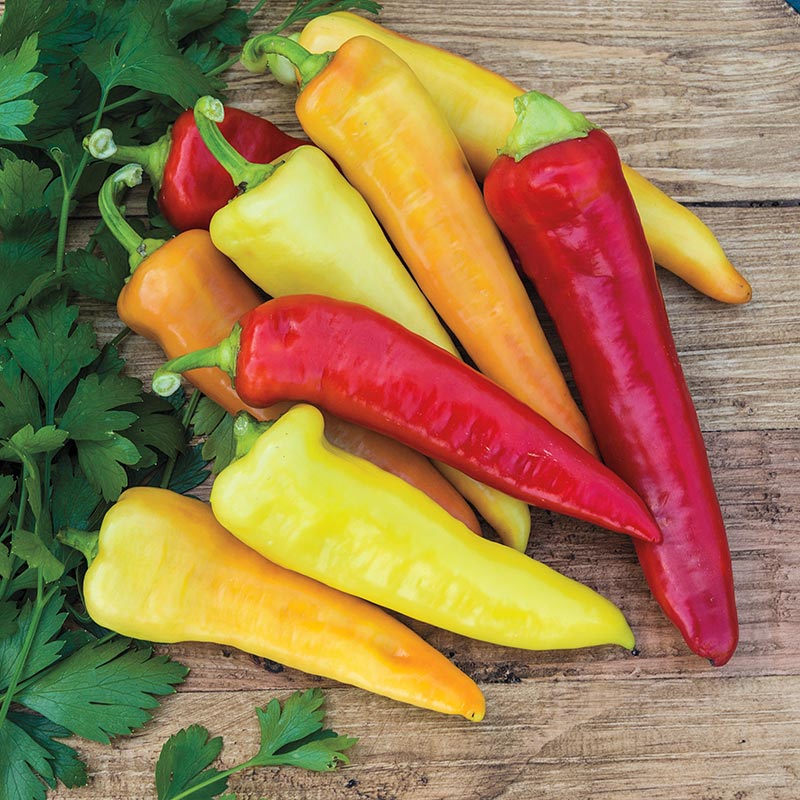
Sweet Banana – (Long Sweet Hungarian) 70 days. (pale green>yellow>orange>crimson red). Heavy yields of attractive, banana-shaped peppers, 6″* 1.5″. Eaten at any ripeness stage, but sweetest when red. Great for colorful salads, frying and freezing.

Sweet Pickle – 55 days. (purple>pale yellow>orange>red). Beautiful compact 18-24″ plants are loaded with upright thick-walled fruits in many colors. 1″*2-3″ fruits have best flavor when red. Great container/ornamental edible.
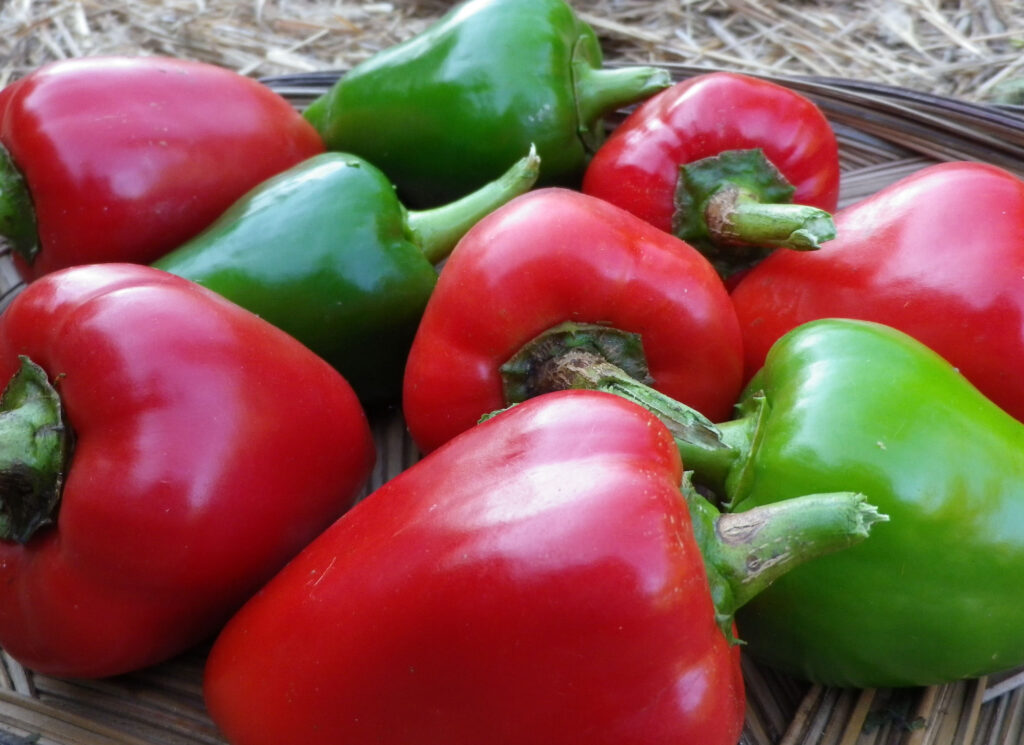
Truhart – Pimento type. Very flavorful heart-shaped (2″*3″) hick-fleshed fruit. Use fresh, roasted, peeled or canned. Especially well suited for salads, Spanish omelets, or eating out of hand like an apple.
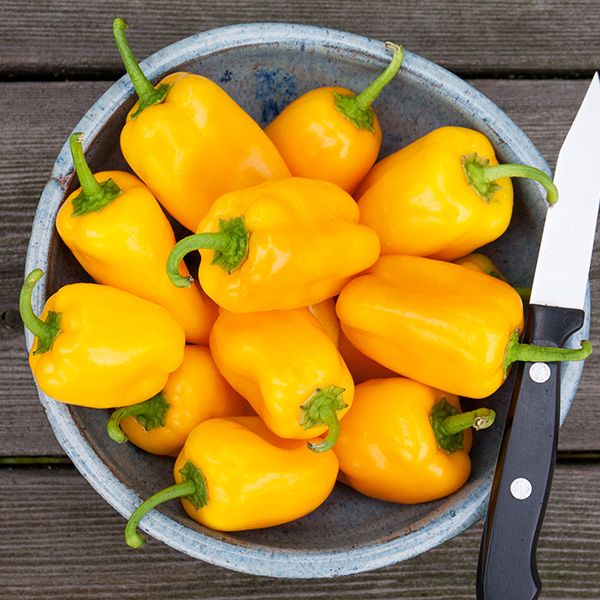
Yellow Picnic – 60 days green, 80 days yellow ripe. Vivid bright yellow with a bright, tart taste. The yellow Picnic Pepper has a nice tart flavor with good complexity and a nice crisp crunch. Selected for upright plant habit, good flavor and thick walls.
